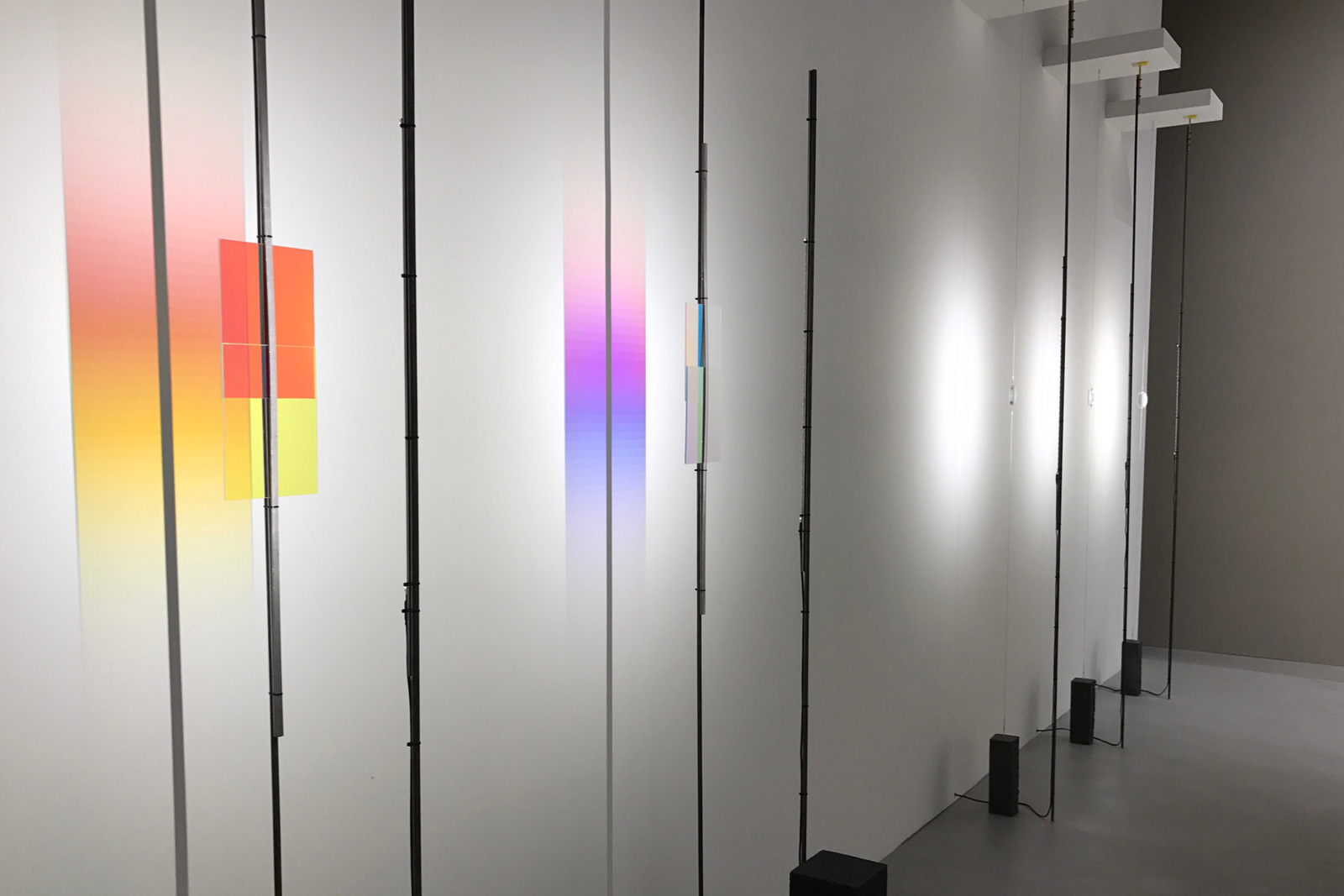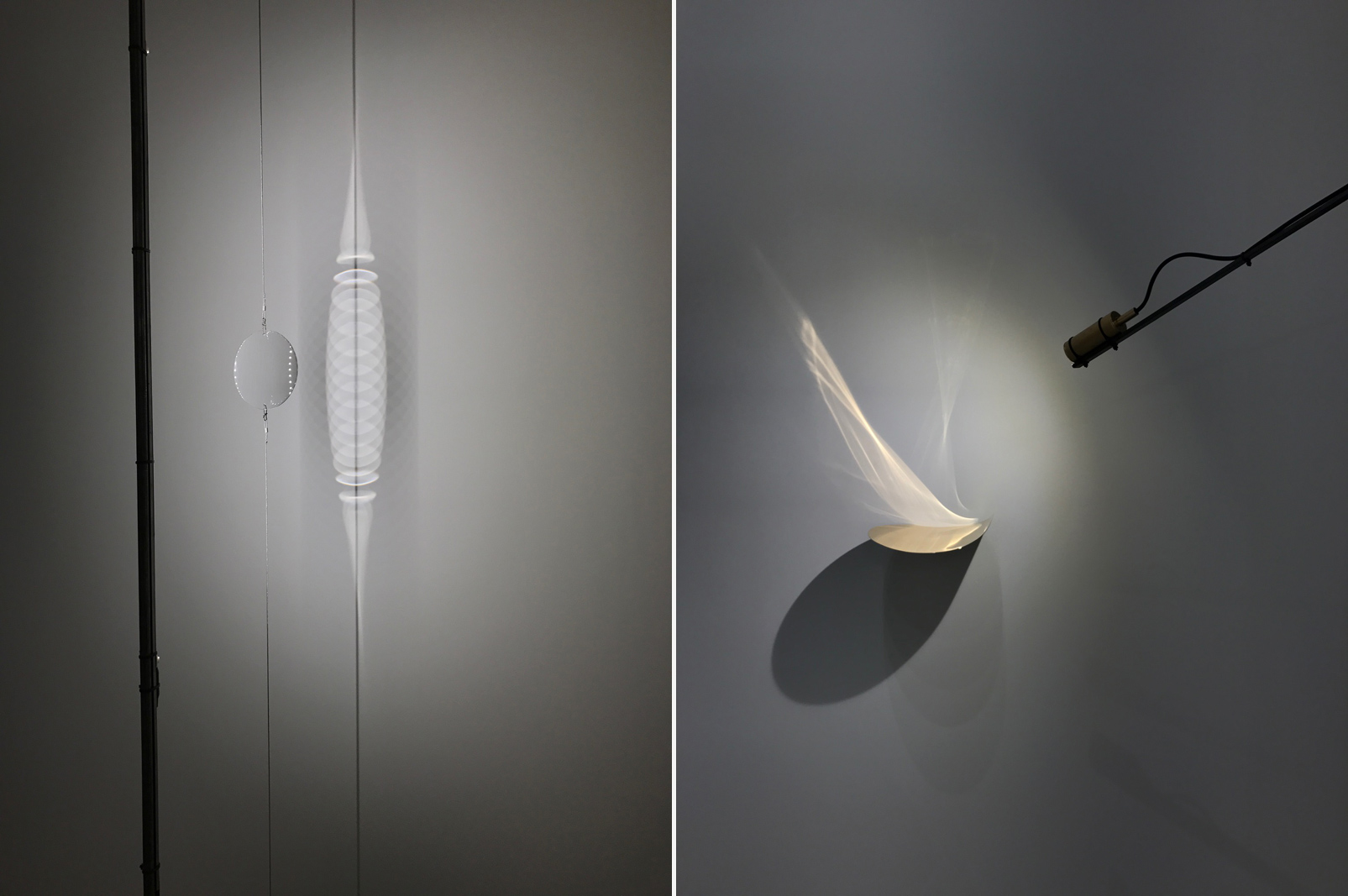Milan Design Week 2017: Formafantasma’s Imaginative Lighting
Designs from the visionary duo that reduce materials but avoid the concept of minimalism

by Kyle Raymond Fitzpatrick
“We’re not one of those people who say ‘less is more,'” Andrea Trimarchi of Italian design duo Formafantasma explains. His partner Simone Farresin agrees. “Actually, no,” he says. “Not at all.” Trimarchi completes the sentiment, “Minimalism? We hate that kind of stuff.”

This might not be what you would guess from Formafantasma’s two big Milan Design Week 2017 showings. Both showings—their experimental Foundation at Spazio Krizia and their Flos debut of Wire Ring and Blush Lamp at Salone del Mobile—deal with the lightness of lighting, using stick-like forms and strip-LEDs to rethink how we remove darkness from space. The works are as fun as they are cerebral but, on the surface, they are fairly lithe. But do not confuse this for minimalism: it’s result of technology and tools available, combined with desired aesthetics.
The new Flos lamps best epitomize this. Before creating the lamps for Foundation, Trimarchi and Farresin didn’t feel prepared to create lighting when Flos approached them. After a few years and a new message from the company after completing Foundation, the two were ready to make lighting on a bigger scale.

“That was exactly the right moment,” Trimarchi explains, noting that the two lamps are the result of “thinking about lighting and less about designing a lamp.” Both designers were hoping to reduce as much as they could and stumbled upon their ring light thanks to the tools at their disposal: an electrical cable and a ring with LEDs. The cable being the main point of the light, it turns on with a push of the cable that wraps around the ring.

The other Flos light uses dichroic glass (Used in “party lights,” as Farresin says) to create rainbow strips from a thin LED beam. “It really sharply goes into the glass, making the color,” he adds. While all Formafantasma’s lights and lamps appear luxe and timeless beyond any sort of design moment, they’re actually a response to something quite urgent: waste. “Our aim from a sustainable perspective is to make something that can last over time,” Trimarchi explains. “The timelessness of the pieces is definitely something we wanted. We really feel the responsibility that, when you design something and it goes into production, it should be the least material as possible.”

“Of course it’s a design,” Farresin adds. “But, again, it’s just a strip of LED[s] and it has this shape because we wanted to have it like a certain position on the wall.” Pairing together this anti-minimalist reduction with creative means to curb waste, you have Formafantasma’s imaginative approach—and it’s all they’ve wanted. “We design for us, first of all, what we would like to have around,” says Farresin. Trimarchi agrees: “It even goes beyond what we want. It’s more what we feel is right.”

Trimarchi and Farresin aren’t stopping with these two lighting pieces. They’re actually taking the concept further with an upcoming body of work for the National Gallery in Melbourne set to debut this December. “It would be work that would be very different from the products,” Trimarchi notes. “It has to do with e-waste and political issues of some countries throughout the world and the non-engagement of companies in the recycling process.” He continues, with a laugh: “Now that we’ve done this, we can’t wait to go back to that.”
Foundation is on view through April 9 at Milan Design Week. Flos’s Salone del Mobile display is on view through 9 April.
Images five, six and seven by Josh Rubin, all other images by Kyle Raymond Fitzpatrick












